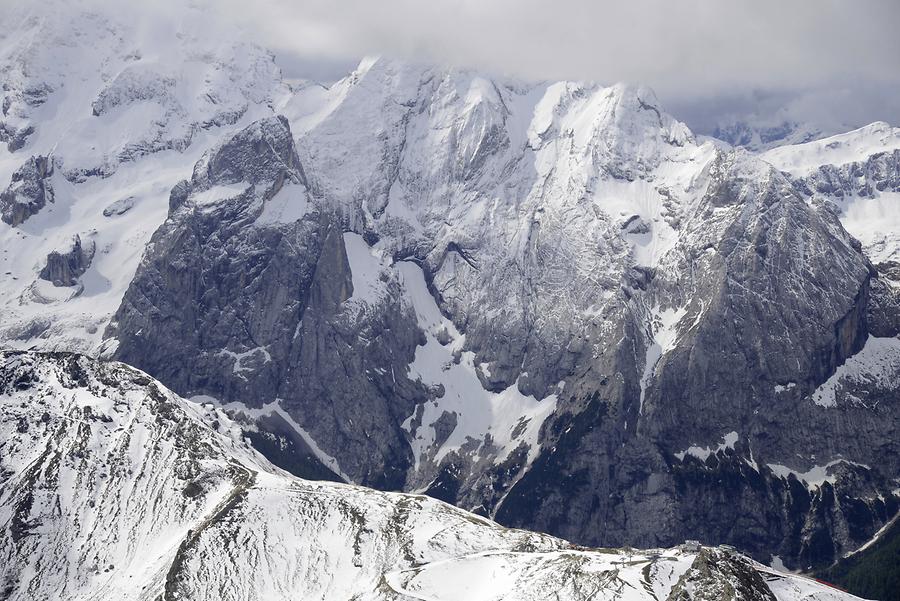Marmolada#

Marmolada, May 2015, © Gerhard Huber, under CC BY-NC 4.0 +Edu
When driving across the Karer Pass towards the Marmolada
Marmolada
, you can feelhow the Dolomites bare their teeth. They stretch from the Val d'Adige in the west to the Sextental in the east, from South Tyrol and Trentino to the province of Belluno. Their highest elevation is reached in the Marmolada with 3342 m. The rugged mountains consist of sediments that were deposited layer by layer over the course of more than 200 million years in the primordial Thetys Ocean. With the continental drift and the elevation of the landscape as a consequence thereof, the fossilized coral reefs have been exposed to erosion since then. Wind, water, frost and snow form the alpine world into a natural work of art. The bizarre buttes are mostly made of dolomite rock, a calcium-magnesium carbonate, which is somewhat harder and much more brittle than pure limestone. It differs from the latter only by the interstratification of magnesium atoms.
Auf einer Fahrt über den Karerpass zur Marmolata zeigen die Dolomiten ihre Zähne. Sie ziehen sich vom Etschtal im Westen bis zum Sextental im Osten, von Südtirol und Trentino bis in die Provinz Belluno. Ihre höchste Erhebung erreichen sie in der Marmolata mit 3342 m. Das wilde Gebirge besteht zum großen Teil aus Sedimenten, die sich vor über 200 Mio. Jahren im Urmeer Thetys Schicht für Schicht abgelagerten. Mit der Kontinentaldrift und der damit verbundenen Hebung der Landschaft sind die versteinerten Korallenriffe seither der Erosion ausgesetzt. Wind, Wasser, Frost und Schnee formen die Bergwelt zu einem natürlichen Kunstwerk. Die bizarren Felsentürme bestehen zum Großteil aus Dolomitgestein, einem Kalcium-Magnesium-Karbonat, das etwas härter und viel spröder ist als reiner Kalkstein. Es unterscheidet sich von diesem nur durch die Einlagerung von Magnesium-Atomen.